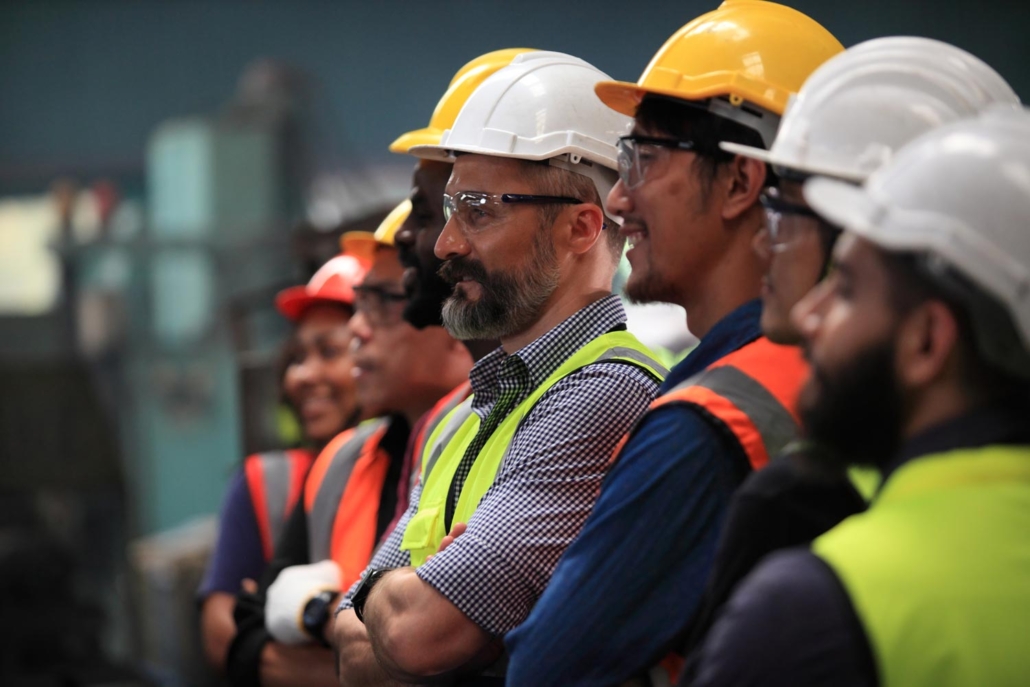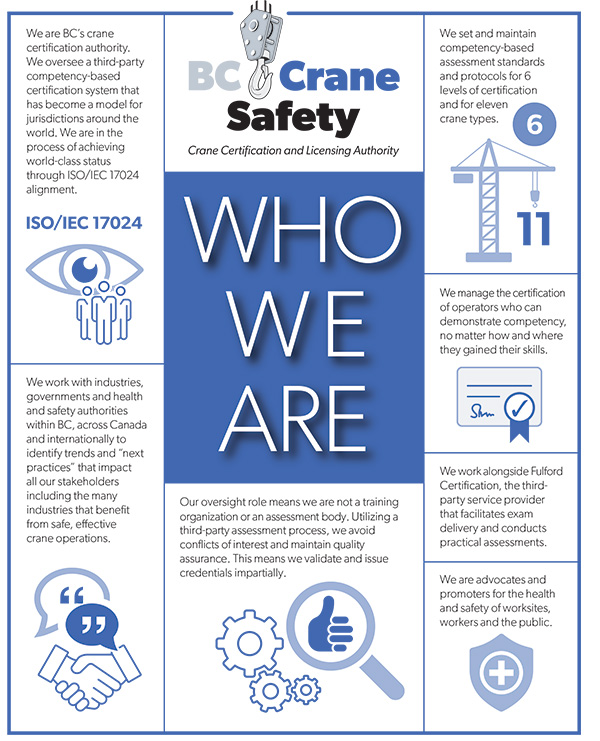June 25, 2024
BC CRANE SAFETY SUMMER 2024
Summer Hazards and Prevention
Introducing BC Crane Safety’s New Preventing Heat Stress Industry Resource Page
This new resource page is designed to provide practical tips for preventing heat stress and promote awareness of the risks associated with working in the heat. Aimed at crane operators, supervisors, contractors, safety professionals and employers, the page covers crucial topics such as recognizing symptoms, prevention strategies and OHS responsibilities that affect the crane industry.
Key features include:
- Short educational videos like “Are you prepared to work in the heat?” and “Are you hydrated?” that offer practical advice in an engaging format.
- A handy Heat Stress Calculator that helps to assess working conditions.
- Detailed guides on various aspects of heat stress, from understanding risks to implementing preventative measures.
Take a look at our graphic overview of the page to learn how to make the most of this important resource. Go straight to the webpage by clicking below.
Wildfire Season Impacts – Be Prepared
Wildfire season is already affecting many parts of the province and beyond. Are you ready? Get helpful information about how to protect yourself and others and prepare to be safe during wildfire season.
Strengthening Our Workforce and Supporting the Next Generation of Crane Operators
We are committed to helping to strengthen our workforce and support the next generation of crane operators in BC. As more experienced operators retire, it’s critically important to attract and train new talent to meet the growing demand in the many industries that use cranes.
BC Crane Safety is looking into how we can create rewarding career opportunities and bring in new talent, including women and minorities. We need your help to understand the challenges and opportunities in recruiting and keeping top-notch crane operators from diverse backgrounds.
We want to facilitate candid discussions within the crane industry about recruitment, training, and retention of top-notch crane operators today, so we can better appreciate what the industry is experiencing when it comes to recruiting individuals from diverse backgrounds while including the perspectives of current crane operators.
In the coming months, we’ll be reaching out to you for your thoughts and ideas. Your experience and knowledge will be vital as we work to develop effective strategies for recruiting and retaining a strong workforce. If you have any questions or comments, please contact us at info@bccranesafety.ca.
Q&A
Question: Can the operator of self-erecting cranes and the rigger be the same person when the operator has a provisional (Level B) certificate?
Answer: No, there always needs to be a separate rigger.
OHSR 14.37.1: The operator of a crane, hoist or boom truck must have full control of the equipment controls whenever the hoisting equipment is in use, and engage in no other duties while operating the equipment.
Question: When top climbing a crane, does it need re-certification from an engineer before the crane can be put back in service?
Answer: Yes. The requirement to have an engineer physically inspect a crane after it has been repositioned is a current requirement under OHSR 14.75(4) – Safe lifting:
“Before a tower crane, other than a self-erecting tower crane is put in service after its mast has been repositioned, a professional engineer must certify that the parts of the crane affected by the repositioning process have been properly installed and any required reshoring for, and bracing to, the supporting structure is in place”.
An amendment to this part of the regulation will take effect October 1, 2024. The new wording will clarify the requirement to include climbing activity and is described by WorkSafeBC in Part 14, Cranes and Hoists — Notice of Project — Tower Crane. The revised wording reads like this:
(4) If the climbing or repositioning of a tower crane affects any connections, bracing or shoring certified by a professional engineer under section 14.74(3), before the tower crane is put into service, a professional engineer must certify that
(a) any parts of the tower crane affected by the climbing or repositioning have been properly installed, and
(b) the connections to and any bracing or shoring of the building or structure supporting the tower crane are in place.
Correction notice: BC Crane Safety thanks vigilant readers who spotted an error in the Spring newsletter when we posted a photo that illustrated a DEP emergency platform. According to ASME-B30.9-2014 (Slings) 9-5.10.1 (k) Synthetic webbing slings shall not be used to support suspended personnel platforms. You can view the corrected newsletter here.








